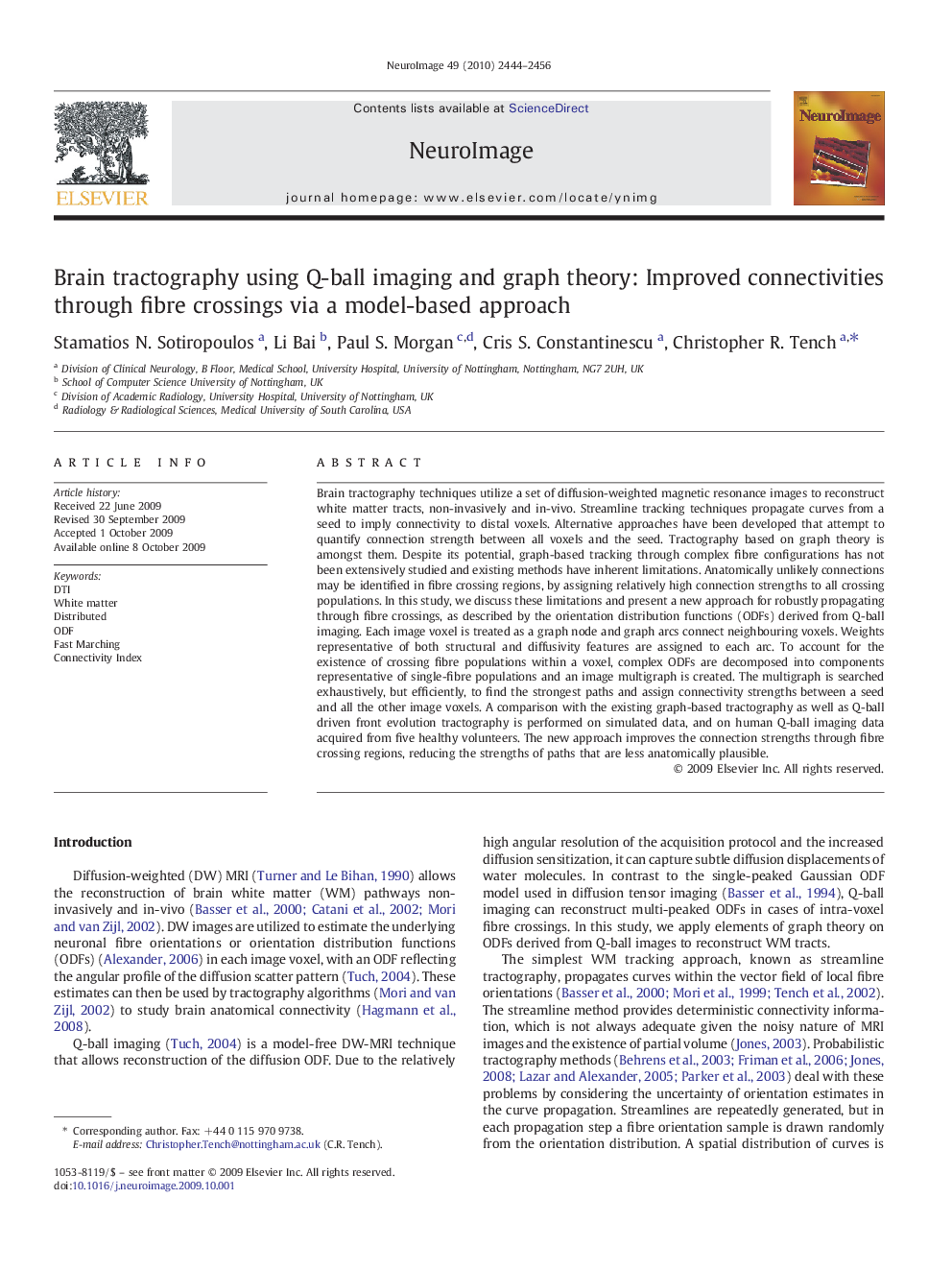| Article ID | Journal | Published Year | Pages | File Type |
|---|---|---|---|---|
| 6037072 | NeuroImage | 2010 | 13 Pages |
Abstract
Brain tractography techniques utilize a set of diffusion-weighted magnetic resonance images to reconstruct white matter tracts, non-invasively and in-vivo. Streamline tracking techniques propagate curves from a seed to imply connectivity to distal voxels. Alternative approaches have been developed that attempt to quantify connection strength between all voxels and the seed. Tractography based on graph theory is amongst them. Despite its potential, graph-based tracking through complex fibre configurations has not been extensively studied and existing methods have inherent limitations. Anatomically unlikely connections may be identified in fibre crossing regions, by assigning relatively high connection strengths to all crossing populations. In this study, we discuss these limitations and present a new approach for robustly propagating through fibre crossings, as described by the orientation distribution functions (ODFs) derived from Q-ball imaging. Each image voxel is treated as a graph node and graph arcs connect neighbouring voxels. Weights representative of both structural and diffusivity features are assigned to each arc. To account for the existence of crossing fibre populations within a voxel, complex ODFs are decomposed into components representative of single-fibre populations and an image multigraph is created. The multigraph is searched exhaustively, but efficiently, to find the strongest paths and assign connectivity strengths between a seed and all the other image voxels. A comparison with the existing graph-based tractography as well as Q-ball driven front evolution tractography is performed on simulated data, and on human Q-ball imaging data acquired from five healthy volunteers. The new approach improves the connection strengths through fibre crossing regions, reducing the strengths of paths that are less anatomically plausible.
Related Topics
Life Sciences
Neuroscience
Cognitive Neuroscience
Authors
Stamatios N. Sotiropoulos, Li Bai, Paul S. Morgan, Cris S. Constantinescu, Christopher R. Tench,
